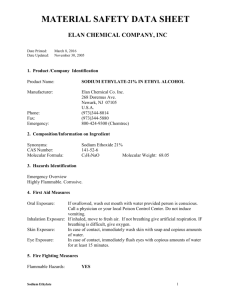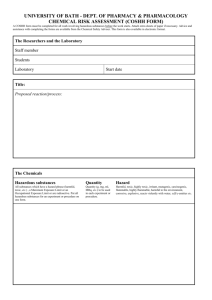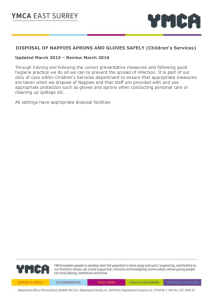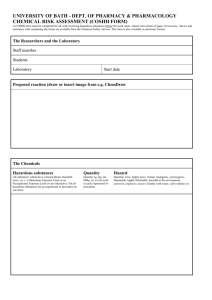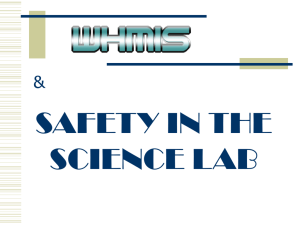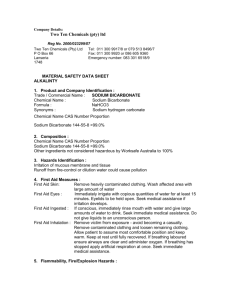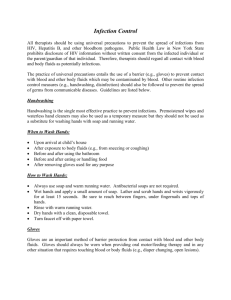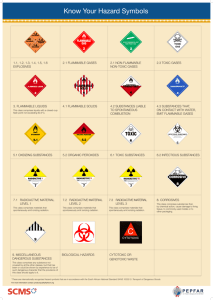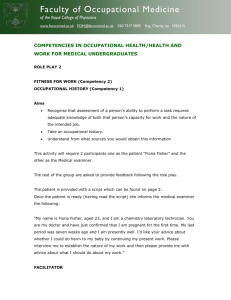COSHH Assessment – Domestos Bleach
advertisement
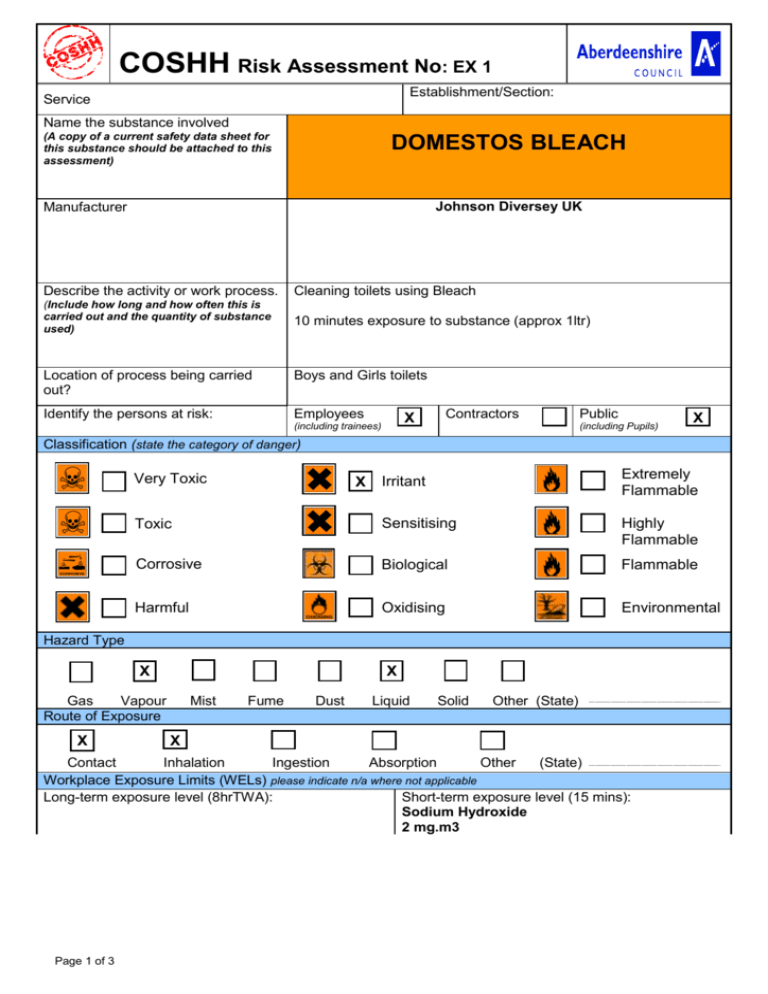
COSHH Risk Assessment No: EX 1 Establishment/Section: Service Name the substance involved (A copy of a current safety data sheet for this substance should be attached to this assessment) DOMESTOS BLEACH Johnson Diversey UK Manufacturer Describe the activity or work process. Cleaning toilets using Bleach (Include how long and how often this is carried out and the quantity of substance used) 10 minutes exposure to substance (approx 1ltr) Location of process being carried out? Boys and Girls toilets Identify the persons at risk: Employees Contractors X (including trainees) Public (including Pupils) X Classification (state the category of danger) Irritant Extremely Flammable Toxic Sensitising Highly Flammable Corrosive Biological Flammable Harmful Oxidising Environmental Very Toxic X Hazard Type X X Gas Vapour Route of Exposure X Mist Fume Dust Liquid Solid Other (State) X Contact Inhalation Ingestion Absorption Other (State) Workplace Exposure Limits (WELs) please indicate n/a where not applicable Long-term exposure level (8hrTWA): Short-term exposure level (15 mins): Sodium Hydroxide 2 mg.m3 Page 1 of 3 State the Risks to Health from Identified Hazards Health hazards: Irritating to the skin and eyes. Contact with acids liberates toxic gas (chlorine). Control Measures: (for example extraction, ventilation, training, supervision). Include special measures for vulnerable groups, such as disabled people and pregnant workers. Take account of those substances that are produced from activities undertaken by another employer’s employees. Respiratory protection: Personal protection is not normally required unless a risk assessment indicates the need for it. Hand protection: Use gloves resistant to Sodium Hypochlorite. Eye protection: Personal protection is not normally required unless a risk assessment indicates the need for it. Skin protection: Not required under normal circumstances. If major exposure is possible, wear suitable protective clothing. Hygiene Measures: When using do not eat, drink or smoke. Wash promptly if skin becomes wet or contaminated. Information should be confirmed by workplace assessment. Is health surveillance or monitoring required? Yes No X Personal Protective Equipment (state type and standard) Dust mask Visor Respirator Goggles Appropriate coveralls to protect against splash X Gloves suitable to protect against Sodium Hydroxide X Gloves Overalls Footwear Other First Aid Measures Eyes: Rinse immediately with plenty of water, holding the eyelids open and seek medical advice if effects persist. Inhalation: Remove from source of exposure. Skin: Wash thoroughly with soap and water. Ingestion: Remove product from mouth, give the casualty a small quantity of water to drink and seek medical advice. Do not induce vomiting. Page 2 of 3 Storage Storage conditions: Store upright in cool, well-ventilated area out of direct sunlight, ensuring that the cap is securely closed. Keep out of reach of children. Secure in locked cupboard. Disposal of Substances & Contaminated Containers Hazardous Waste Skip Return to Depot Return to Supplier Other X Methods of disposal: This product does not contain any prescribed substance under the Environmental Protection Act (Prescribed Processes and Substances) Regulations 1991 but is classified as special waste under the Control of Substances (Special Waste) Regulations 1996. Small quantities: Wear suitable gloves and eye/face protection. Dilute with water to at least 5% w/v (50 g/litre) and pour down a wastewater drain (foul sewer). Large quantities: contact a licensed waste management company. Dispose of according to local authority regulations. Disposal of packaging: Rinse out containers at least twice and recycle if facilities exist or dispose of as commercial waste. European waste catalogue 20 01 29 Detergents containing dangerous substances Is exposure adequately controlled? Yes X No Risk Rating Following Control Measures High Assessed by: Page 3 of 3 Medium Date: Low X Review Date:

